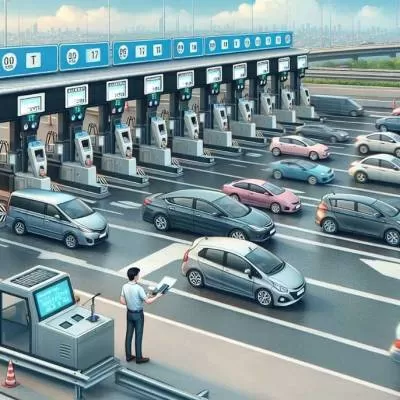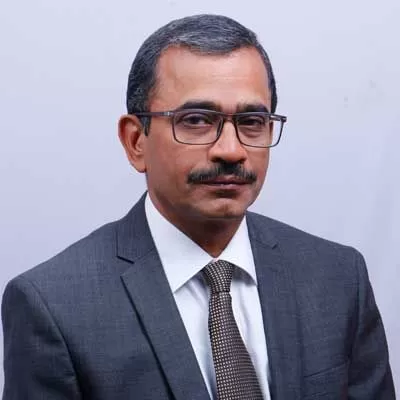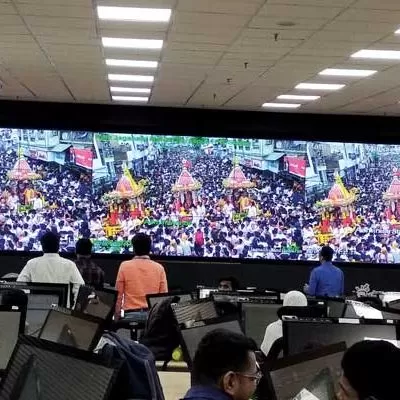- Home
- Real Estate
- Unclogging legal and land blocks

Unclogging legal and land blocks
According to a survey by research agency Daksh, if one has a case pending in any of the subordinate courts in the country, the average time in which a decision is likely to be made is nearly six years. Even assuming that a case does not go to the Supreme Court, an average litigant who appeals to at least one higher court is likely to spend more than 10 years in court. Now, an underlying informal rule exists within the government department that is causing a huge bottleneck in judgements and awards. A large portion of the ´pending cases backlog´ originates from the fact that all judgements issued against government departments are appealed against, as a standard practice. This is so much of a hard rule that if a government officer does not follow suit, he fears that the Vigilance Commission may come after him. This not only delays justice, even in genuine cases, but clogs the judiciary system unnecessarily. Arbitration awards are also the victim of this informal ´standard rule´.
The new arbitration act has come into effect from October 23, 2015, which allows the awardee of the arbitration the fruits of the award after three months even though an application has been filed objecting to the award, unless the court issues a stay on the award. Considering almost Rs 3 lakh crore is stuck in disputes and arbitration (as per ASSOCHAM, it is closer to Rs 5 lakh crore; just consider that the amount stuck in arbitration and disputes with NHAI alone is Rs 23,000 crore), the new act may help resolve conflicts swiftly. But unless we arrest the root of the higher flow of arbitration cases, namely the ´standard rule´, we will be swimming against the tide.
Another factor strangulating growth is the escalating cost of land and delays caused in land acquisition. Data by the Ministry of Road Transport and Highways shows that during 2015-16, NHAI paid Rs 19,020 crore to acquire 9,285 hectare. This is the most it has paid out by way of compensation in one year compared to disbursements in the past five years. In the last fiscal, NDA paid an average of Rs 2 crore per hectare compared to Rs 1.35 crore per hectare in 2014-15.
Here, renting land for infrastructure projects is a viable and practical solution. It will help save capital by not requiring a large amount of money to be locked up and save time in purchase and the entire process of land acquisition, thereby fast-tracking projects. (According to recent estimates, the capex for land alone for road projects is Rs 185,000 crore.). Some industries already follow the model of leasing land instead of acquiring it. Oil and gas extraction and renewable energy projects usually follow the land-lease model. Land pooling used by Magarpatta city a decade ago and, more recently, by Andhra capital Amaravati, by CIDCO for the Navi Mumbai International Airport and by the Maharashtra Government for the Mumbai-Nagpur road corridor offer examples of how both delays and capex commitment can be lowered.
Indeed, it is time to unclog the arteries for the economic lifeblood to flow unfettered to make India vibrant and reach its growth goals.
And in this issue, understanding the growth goals across Tier-II and Tier-III cities, and consequently the growth in their building and design needs, the second decade and the 11th edition of the CW Architect and Builder Awards - CWAB 2.0 - introduced a whole new category of Noteworthy Projects. Through this category, we recognised the work being done across sectors - interiors, retail, commercial, residential, institutional and hospitality - and a whole new set of winners took centrestage with India´s Top Architects and Builders last month in Mumbai. These included winning projects from Anand, Surat, Calicut, etc.
And, as we pace up with the digital world, stay with us for daily news and updates on the magazine portal www.ConstructionWorld.in Let us also continue to be your single window to share your perspectives and voice your opinions and recommendations - and this time, its digital!
NITI Aayog is finally fixing the loose ends with the construction matrix to allow the multiplier effect to breathe its magical effect across the economy. It is putting together a policy to remove hurdles for projects where contractors are locked in arbitration with government agencies so that 75 per cent of the funds would be released to banks in cases where there is unanimous award in favour of a contractor. This will help release funds and revive stalled projects. Close to Rs 3.6 lakh crore is locked up in such cases and banks will see their performance improve even if a part of the funds is released. According to a survey by research agency Daksh, if one has a case pending in any of the subordinate courts in the country, the average time in which a decision is likely to be made is nearly six years. Even assuming that a case does not go to the Supreme Court, an average litigant who appeals to at least one higher court is likely to spend more than 10 years in court. Now, an underlying informal rule exists within the government department that is causing a huge bottleneck in judgements and awards. A large portion of the ´pending cases backlog´ originates from the fact that all judgements issued against government departments are appealed against, as a standard practice. This is so much of a hard rule that if a government officer does not follow suit, he fears that the Vigilance Commission may come after him. This not only delays justice, even in genuine cases, but clogs the judiciary system unnecessarily. Arbitration awards are also the victim of this informal ´standard rule´. The new arbitration act has come into effect from October 23, 2015, which allows the awardee of the arbitration the fruits of the award after three months even though an application has been filed objecting to the award, unless the court issues a stay on the award. Considering almost Rs 3 lakh crore is stuck in disputes and arbitration (as per ASSOCHAM, it is closer to Rs 5 lakh crore; just consider that the amount stuck in arbitration and disputes with NHAI alone is Rs 23,000 crore), the new act may help resolve conflicts swiftly. But unless we arrest the root of the higher flow of arbitration cases, namely the ´standard rule´, we will be swimming against the tide. Another factor strangulating growth is the escalating cost of land and delays caused in land acquisition. Data by the Ministry of Road Transport and Highways shows that during 2015-16, NHAI paid Rs 19,020 crore to acquire 9,285 hectare. This is the most it has paid out by way of compensation in one year compared to disbursements in the past five years. In the last fiscal, NDA paid an average of Rs 2 crore per hectare compared to Rs 1.35 crore per hectare in 2014-15. Here, renting land for infrastructure projects is a viable and practical solution. It will help save capital by not requiring a large amount of money to be locked up and save time in purchase and the entire process of land acquisition, thereby fast-tracking projects. (According to recent estimates, the capex for land alone for road projects is Rs 185,000 crore.). Some industries already follow the model of leasing land instead of acquiring it. Oil and gas extraction and renewable energy projects usually follow the land-lease model. Land pooling used by Magarpatta city a decade ago and, more recently, by Andhra capital Amaravati, by CIDCO for the Navi Mumbai International Airport and by the Maharashtra Government for the Mumbai-Nagpur road corridor offer examples of how both delays and capex commitment can be lowered. Indeed, it is time to unclog the arteries for the economic lifeblood to flow unfettered to make India vibrant and reach its growth goals. And in this issue, understanding the growth goals across Tier-II and Tier-III cities, and consequently the growth in their building and design needs, the second decade and the 11th edition of the CW Architect and Builder Awards - CWAB 2.0 - introduced a whole new category of Noteworthy Projects. Through this category, we recognised the work being done across sectors - interiors, retail, commercial, residential, institutional and hospitality - and a whole new set of winners took centrestage with India´s Top Architects and Builders last month in Mumbai. These included winning projects from Anand, Surat, Calicut, etc. And, as we pace up with the digital world, stay with us for daily news and updates on the magazine portal www.ConstructionWorld.in Let us also continue to be your single window to share your perspectives and voice your opinions and recommendations - and this time, its digital!
























